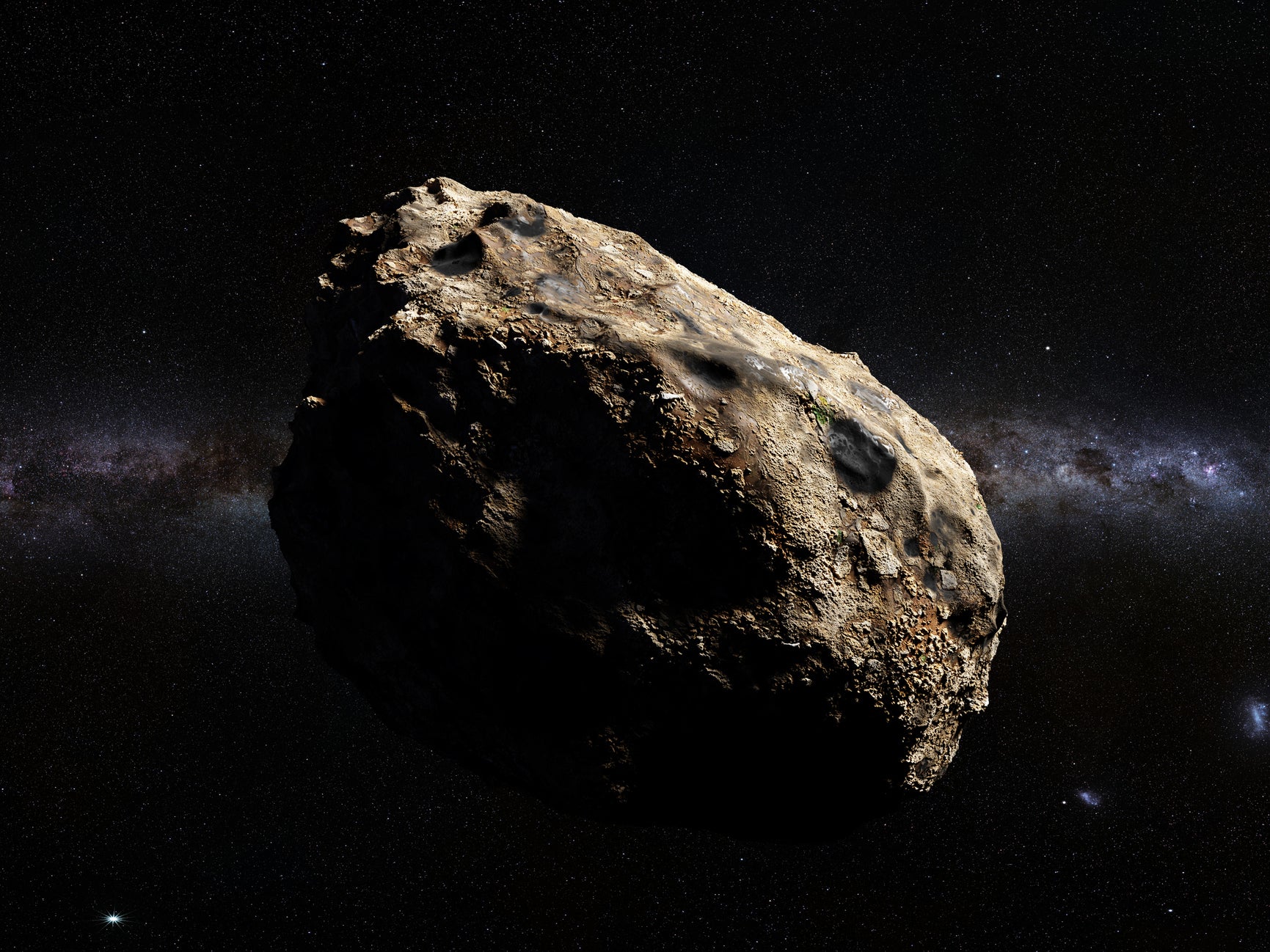Skyscraper-sized asteroid is heading closer to Earth at 11,000mph – but will fly past safely
Object is classified as 'potentially hazardous' – but there is nothing to worry about

An asteroid is heading towards Earth, but will miss us at a vast distance, without posing any danger.
Numerous reports have suggested that the object known as 163348 (2002 NN4) is headed towards Earth, with the implication that humanity could be at risk.
But life is not likely to be wiped out any time soon, since the rock will sail past at a distance of millions of kilometres.
The asteroid will make its closest pass over the weekend, before flying off on its own orbit around the solar system. The next relatively close pass will not come until 2029.
Nasa does classify the object as a "Potentially Hazardous Asteroid", but that is a relatively easy club to get into. Being given the description does not necessarily indicate that Earth is in any immediate danger.
To be classified that way, all an object has to do is come within just under five million miles of Earth, and be bigger than 140 metres in diameter. It does not mean that Earth faces any imminent threat from the object, only that it could possibly do so at some point in the future.
The object is also classified as a near-Earth object. But that name can also be misleading, since "near" in this case means that it can be as much as 1.3 times as far away from us as the Sun is.
Many reports have also made much of the fact that the object is very large, at the size of a football field or a skyscraper.
While that does make it bigger than 90 per cent of asteroids, it is still much smaller than the largest asteroids in our solar system.
The object was first observed in 2002, which leads to that part of its longer name.
Join our commenting forum
Join thought-provoking conversations, follow other Independent readers and see their replies
Comments